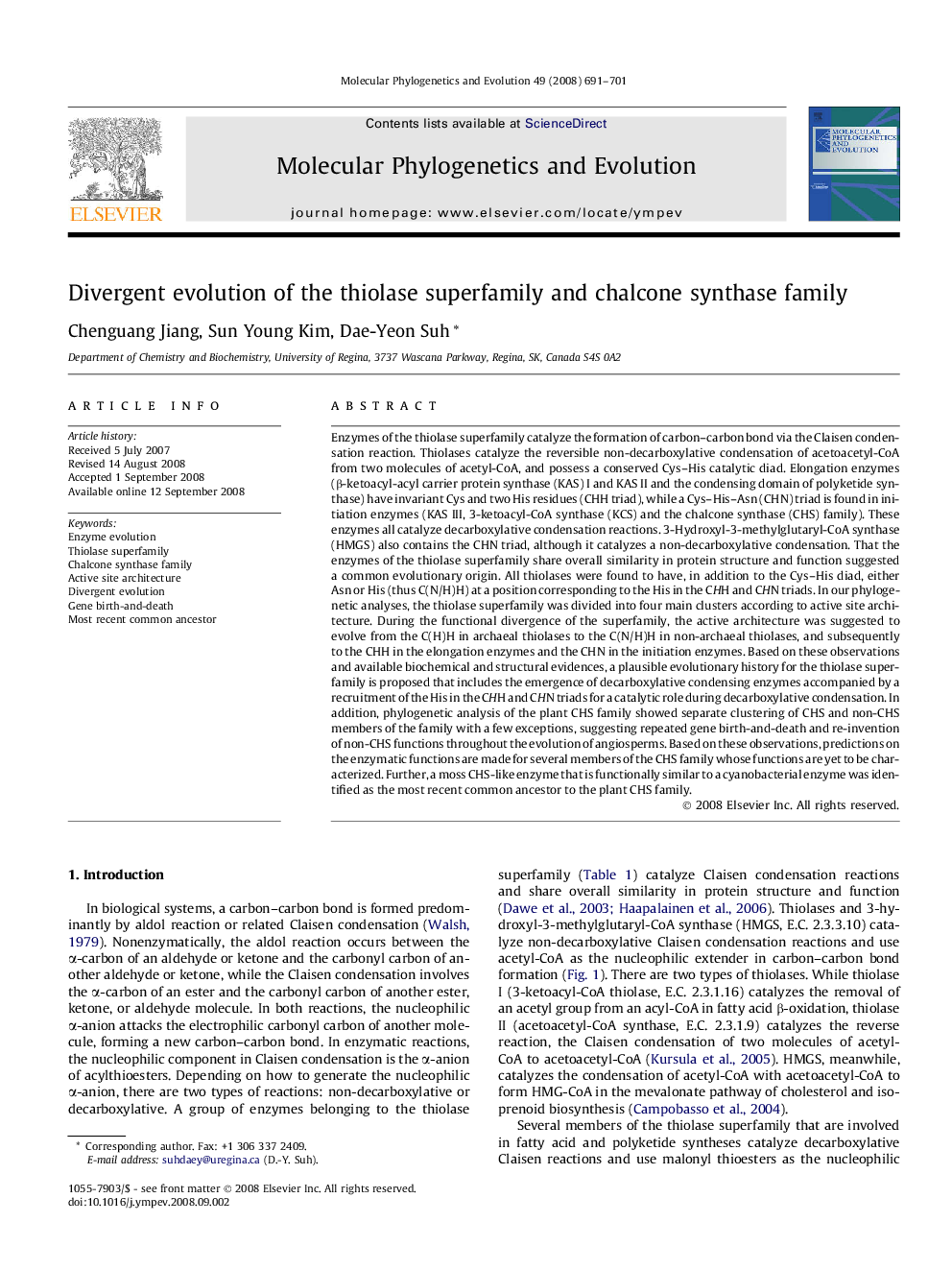| کد مقاله | کد نشریه | سال انتشار | مقاله انگلیسی | نسخه تمام متن |
|---|---|---|---|---|
| 2834988 | 1164330 | 2008 | 11 صفحه PDF | دانلود رایگان |

Enzymes of the thiolase superfamily catalyze the formation of carbon–carbon bond via the Claisen condensation reaction. Thiolases catalyze the reversible non-decarboxylative condensation of acetoacetyl-CoA from two molecules of acetyl-CoA, and possess a conserved Cys–His catalytic diad. Elongation enzymes (β-ketoacyl-acyl carrier protein synthase (KAS) I and KAS II and the condensing domain of polyketide synthase) have invariant Cys and two His residues (CHH triad), while a Cys–His–Asn (CHN) triad is found in initiation enzymes (KAS III, 3-ketoacyl-CoA synthase (KCS) and the chalcone synthase (CHS) family). These enzymes all catalyze decarboxylative condensation reactions. 3-Hydroxyl-3-methylglutaryl-CoA synthase (HMGS) also contains the CHN triad, although it catalyzes a non-decarboxylative condensation. That the enzymes of the thiolase superfamily share overall similarity in protein structure and function suggested a common evolutionary origin. All thiolases were found to have, in addition to the Cys–His diad, either Asn or His (thus C(N/H)H) at a position corresponding to the His in the CHH and CHN triads. In our phylogenetic analyses, the thiolase superfamily was divided into four main clusters according to active site architecture. During the functional divergence of the superfamily, the active architecture was suggested to evolve from the C(H)H in archaeal thiolases to the C(N/H)H in non-archaeal thiolases, and subsequently to the CHH in the elongation enzymes and the CHN in the initiation enzymes. Based on these observations and available biochemical and structural evidences, a plausible evolutionary history for the thiolase superfamily is proposed that includes the emergence of decarboxylative condensing enzymes accompanied by a recruitment of the His in the CHH and CHN triads for a catalytic role during decarboxylative condensation. In addition, phylogenetic analysis of the plant CHS family showed separate clustering of CHS and non-CHS members of the family with a few exceptions, suggesting repeated gene birth-and-death and re-invention of non-CHS functions throughout the evolution of angiosperms. Based on these observations, predictions on the enzymatic functions are made for several members of the CHS family whose functions are yet to be characterized. Further, a moss CHS-like enzyme that is functionally similar to a cyanobacterial enzyme was identified as the most recent common ancestor to the plant CHS family.
Journal: Molecular Phylogenetics and Evolution - Volume 49, Issue 3, December 2008, Pages 691–701